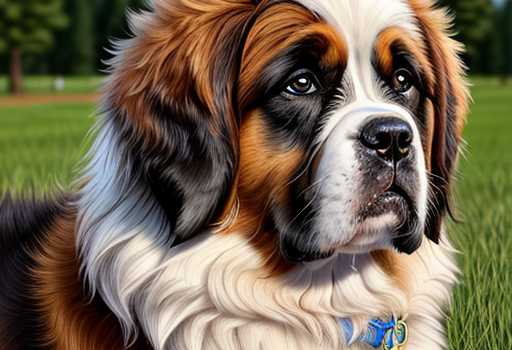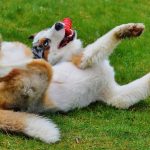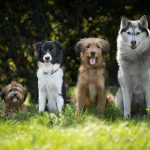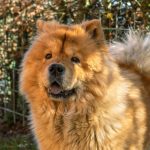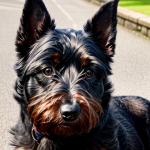
Largest Dog Breed: A Comprehensive Guide
Introduction to Largest Dog Breed
Dogs come in various shapes and sizes, and while some breeds are small and compact, others boast impressive stature. This article will explore the world of the largest dog breeds.
From gentle giants to powerful companions, these magnificent dogs captivate our hearts with their sheer size and unique personalities. Join us as we delve into the characteristics, history, and care requirements of the giant dog breeds.

The Fascination with Large Dogs
Humans have long been intrigued by large dogs. The towering presence and imposing physique of these breeds often evoke a sense of awe and admiration.
Many people are drawn to their gentle and loyal nature, making them excellent family pets and companions. Furthermore, large dogs can provide a sense of security and protection due to their size and natural guarding instincts.
Characteristics of Large Dog Breeds
Large dog breeds share several common characteristics beyond their size. These dogs have robust, muscular bodies, powerful limbs, and deep, resonating barks. While specific physical traits may vary across breeds, large dogs generally have a slower maturity rate than smaller breeds. They also have a longer lifespan in some cases.
History and Origins
The history of large dog breeds is often intertwined with human civilization. Many of these breeds were initially developed for specific purposes such as guarding, herding, or hunting.
Over time, their roles expanded to include companionship and service work. Ancient civilizations like the Egyptians, Greeks, and Romans revered large dogs and often depicted them in art and mythology.
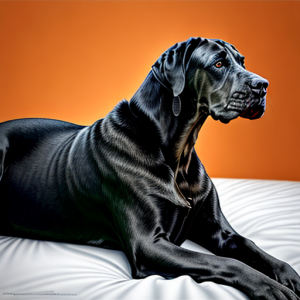
Popular Large Dog Breeds
Great Dane: Known as the “Apollo of Dogs” the Great Dane is one of the largest dog breeds in the world. They are friendly , affectionate and often referred to as gentle giants.
Saint Bernard: Originating from the Swiss Alps, Saint Bernards are renowned for their rescue work in the mountains. They have a calm temperament and are excellent with children.
Newfoundland: The Newfoundland is a water-loving breed with a thick double coat. They are strong swimmers and have a gentle and patient nature, making them ideal family pets.
English Mastiff: With a massive head and a muscular body, the English Mastiff is a breed of impressive size. They are known for their loyalty and make excellent guard dogs.
Leonberger: This German breed is a cross between Saint Bernard, Newfoundland, and Great Pyrenees. Leonbergers are gentle, intelligent, and great with families.
Training and Socialization
Training and socialization are crucial for large dog breeds to ensure they become well-behaved and obedient companions. Early training helps establish boundaries and teaches them basic commands. Socialization allows them to interact with other dogs and people, preventing behavioral issues in the future.
Exercise and Physical Needs
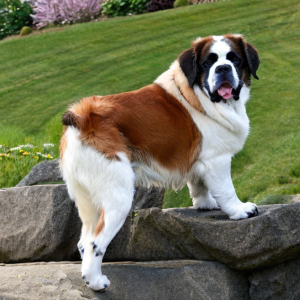
Large dogs require regular exercise to maintain their physical and mental well-being. Daily walks, playtime, and engaging activities are essential to prevent boredom and obesity.
However, it is important to note that exercise requirements vary among different breeds, and consulting with a veterinarian is recommended to develop an appropriate exercise routine.
Grooming and Maintenance
Grooming needs for large dog breeds vary depending on their coat type. Breeds with long or thick coats, such as the Newfoundland or Leonberger, require regular brushing to prevent matting and keep their coats healthy. Additionally, maintaining proper dental hygiene, trimming nails, and cleaning ears are essential parts of their grooming routine.

Health Considerations
Large dog breeds are generally prone to certain health conditions such as hip dysplasia , bloat and heart problems. Responsible breeders perform health screenings to minimize the risk of these inherited diseases. Regular veterinary check-ups balanced diet and maintaining a healthy weight are crucial for ensuring the overall well-being of large dogs.
Choosing the Right Large Dog Breed
When considering a large dog breed, it is essential to research and chooses a breed that aligns with your lifestyle and living situation. Factors such as exercise requirements , grooming needs and temperament should be carefully considered. Consulting with experienced breeders or rescue organizations can provide valuable insights into different breeds’ characteristics and care requirements.

Living with a Large Dog
Living with a large dog requires adequate space and a commitment to meeting their needs. These dogs thrive in environments with enough room to move around comfortably. Providing them with regular exercise , mental stimulation and a loving safe home is essential. Additionally , training and socialization play a crucial role in ensuring a harmonious relationship between the dog and its human family.
Famous Large Dog Breeds in Pop Culture
Large dog breeds have often been featured in movies, books, and popular culture, leaving an indelible mark on our collective consciousness. From Beethoven, the lovable Saint Bernard, to Hooch, the slobbery Dogue de Bordeaux in the film “Turner & Hooch,” these dogs have captured our hearts and entertained us with their memorable on-screen presence.
F.A.Q.
Q1: What is the largest dog breed in the world?
A1: The title for the largest dog breed in the world typically goes to the Great Dane. Known for their imposing size Great Danes can reach heights of around 30 inches (76 centimeters) at the shoulder and weigh between 110 to 175 pounds (50 to 79 kilograms) or even more in some cases.
Q2: Are large dogs suitable for families with children?
A1: Yes, large dogs can be suitable for families with children. However, choosing a breed with a temperament known to be good with kids is essential. Breeds such as Labrador Retrievers , Golden Retrievers and Bernese Mountain Dogs are often considered friendly and gentle with children. It’s crucial to socialize and train any dog , regardless of size to ensure they interact well with kids and understand appropriate behavior.
Q3: How much exercise do large dog breeds require?
A1: The exercise needs of large dog breeds can vary but generally they require a moderate to high level of physical activity. Depending on the breed, daily exercise sessions ranging from 30 minutes to 2 hours are usually recommended. Activities like brisk walks, jogging, playing fetch and engaging in interactive games help fulfill their exercise requirements and keep them mentally stimulated.
Q4: Do large dogs require a special diet?
A1: Large dogs may have specific dietary needs, especially during growth. They require a well-balanced diet with appropriate amounts of proteins fats – carbohydrates – vitamins and minerals to support their development and overall health. Large breed-specific dog foods are available and formulated to meet their nutritional requirements and help prevent issues like bone and joint problems associated with rapid growth.
Q5: Are large dogs more prone to specific health issues?
A1: Large dog breeds are generally more prone to specific health issues than smaller breeds. Some common health concerns for large dogs include hip and elbow dysplasia, bloat (gastric dilatation volvulus) certain types of cancer heart problems and joint issues. Regular veterinary check-ups a balanced diet proper exercise and a healthy weight can help mitigate these risks and promote better overall health in large breeds.
Conclusion
In conclusion, large dog breeds offer a unique combination of size, loyalty, and companionship. From their fascinating history to their care requirements, these magnificent big dog breeds hold a special place in our hearts. If you are considering welcoming a large dog into your family, choose a breed that aligns with your lifestyle and provide them with the love and care they deserve.









